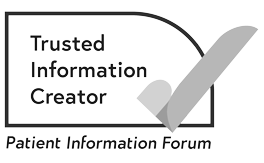Stages of liver cancer
The stage of a cancer describes its size and whether it has spread from where it first started.
About liver cancer stages
The stage of a cancer describes its size and whether it has spread from where it first started. Knowing the stage of the cancer helps you and your doctors decide on the best treatment for you.
There are different systems used to stage primary liver cancer (also called hepatocellular carcinoma (HCC). These include the:
- Barcelona Clinic Liver Cancer (BCLC) staging system
- TNM staging system.
We understand that waiting to know the stage of your cancer can be a worrying time. We are here if you need someone to talk to. You can:
- Call the Macmillan Support Line for free on 0808 808 00 00.
- Chat to our specialists online.
Related pages
Barcelona Clinic Liver Cancer (BCLC) staging system
This is the most common system used for liver cancer. It looks at different things to decide on the stage of liver cancer. This includes:
- the size and the number of tumours in the liver
- how well the liver works, which is measured by a system called the Child-Pugh scale
- whether the cancer is affecting your activities, measured by a scale called performance status.
Child-Pugh classification
Doctors assess how well your liver is working using the Child-Pugh classification system.
This looks at:
- the level of a waste product called bilirubin in the blood
- the level of a protein called albumin in the blood
- how quickly your blood clots
- whether there is any build-up of fluid in the tummy area (abdomen) – this is called ascites
- whether liver damage is affecting how the brain is working – this is called encephalopathy.
Based on this, people fall into 1 of 3 groups:
- A – the liver has some damage, but it is working normally.
- B – there is some damage to the liver, affecting how well it works.
- C – the liver is very damaged and not working well. It may not be able to cope with treatment for the cancer.
Performance status (PS)
Performance status (PS) is a scale to rate how well you are:
- PS 0 – you are fully active and can do much as you did before your illness.
- PS 1 – you cannot do heavy physical work but can do everything else.
- PS 2 – you are up and about for more than half the day. You can look after yourself but cannot work.
- PS 3 – you have troublesome symptoms and are in bed or a chair for more than half the day. You need help to look after yourself.
- PS 4 – you are in bed or a chair all the time and need complete care.
The BCLC staging system
It has 5 stages:
- Stage 0 liver cancer – There is 1 tumour in the liver that is 2cm or smaller across. Your liver is working normally, and you are very well.
- Stage A liver cancer – There is 1 tumour in the liver that is smaller than 5cm across. Or there are up to 3 tumours and they are all 3cm or smaller across. Your liver is working normally, and you are very well.
- Stage B liver cancer – There are many tumours in the liver. You are well, and your liver is working normally.
- Stage C liver cancer –There is some damage to your liver, or the cancer has spread into main blood vessel of the liver. Or the cancer has spread to nearby lymph nodes or other parts of your body. You are not as well which might be affecting things like being able to work.
- Stage D liver cancer – You may have symptoms caused by liver damage such as a build-up of fluid in the tummy area (called ascites). You are very unwell and need some or a lot of help to look after yourself. Your liver is not working well.
Doctors sometimes describe HCC as being early, intermediate or advanced linked to the BCLC stage:
- stage 0 is very early
- stage A is early
- stage B is intermediate
- stages C and D are advanced.
The TNM staging system
This is another system used to stage liver cancer. When used to stage HCC:
- T describes the size and the number of the liver tumours, and whether the cancer has spread into the blood vessels
- N describes whether the cancer has spread to any lymph nodes near the liver
- M describes whether the cancer has spread into organs near to the liver – except the gall bladder or peritoneum.
This system gives detailed information about the tumour stage.
About our information
This information has been written, revised and edited by Macmillan Cancer Support’s Cancer Information Development team. It has been reviewed by expert medical and health professionals and people living with cancer.
-
References
Below is a sample of the sources used in our primary liver cancer information. If you would like more information about the sources we use, please contact us at informationproductionteam@macmillan.org.uk
ESMO Guidelines Committee. Updated treatment recommendations for hepatocellular carcinoma (HCC) from the ESMO Clinical Practice Guidelines. eUpdate. March 2021. Available from: www.esmo.org/guidelines/guidelines-by-topic/esmo-clinical-practice-guidelines-gastrointestinal-cancers/hepatocellular-carcinoma-esmo-clinical-practice-guidelines-for-diagnosis-treatment-and-follow-up/eupdate-hepatocellular-carcinoma-treatment-recommendations [accessed April 2023].
Huang QD, Teng MLP. Hepatocellular carcinoma – symptoms, diagnosis and treatment. BMJ Best Practice Guidelines. 2022. Available from: www.bestpractice.bmj.com/topics/en-gb/369 [accessed March 2023].
Vogel A, Cervantes A, Chau I, Daniele B, Llovet JM, Meyer T, et al. Hepatocellular carcinoma: ESMO Clinical Practice Guidelines for diagnosis, treatment and follow-up. Annals of Oncology. 2018;29(4): 238–255. Available from: www.doi.org/10.1093/annonc/mdy308 [accessed April 2023].
Date reviewed

Our cancer information meets the PIF TICK quality mark.
This means it is easy to use, up-to-date and based on the latest evidence. Learn more about how we produce our information.
The language we use
We want everyone affected by cancer to feel our information is written for them.
We want our information to be as clear as possible. To do this, we try to:
- use plain English
- explain medical words
- use short sentences
- use illustrations to explain text
- structure the information clearly
- make sure important points are clear.
We use gender-inclusive language and talk to our readers as ‘you’ so that everyone feels included. Where clinically necessary we use the terms ‘men’ and ‘women’ or ‘male’ and ‘female’. For example, we do so when talking about parts of the body or mentioning statistics or research about who is affected.
You can read more about how we produce our information here.





